1-Day Mind Body Nursing CME – April 9th
enews
1-Day Mind Body Nursing CME – April 9th
The Benson-Henry Institute for Mind Body Medicine (BHI) is pleased to invite nurses and healthcare clinicians to its upcoming continuing medical education program, The Science of Stress and Resiliency: Integrating Mind-Brain-Body Interactions into your Nursing Practice.
The program is offered under the auspices of the Norman Knight Nursing Center for Clinical & Professional Development at Massachusetts General Hospital and will be held Monday, April 9th from 8 AM to 5 PM at Partners Healthcare at Assembly Row, Somerville.
“There aren’t enough drugs or interventions to keep us healthy. Understanding the physiology of stress and the mechanisms and interventions that counter its harmful influence is needed for prevention and treatment of illness and for overall vitality and resiliency. This is an excellent opportunity for nurses to learn how the science of stress affects the brain and body and to develop self-care skills they can teach patients and utilize themselves to build resiliency and reduce burnout,” said course director Peg Baim, MS, NP.
Participants will hear the latest research into the science of stress and how it affects the body at the genomic level, understand how lifestyle behaviors can positively impact health outcomes and build resiliency, build skills in meditation, understand cognitive reappraisal and take part in mind body practices like yoga.
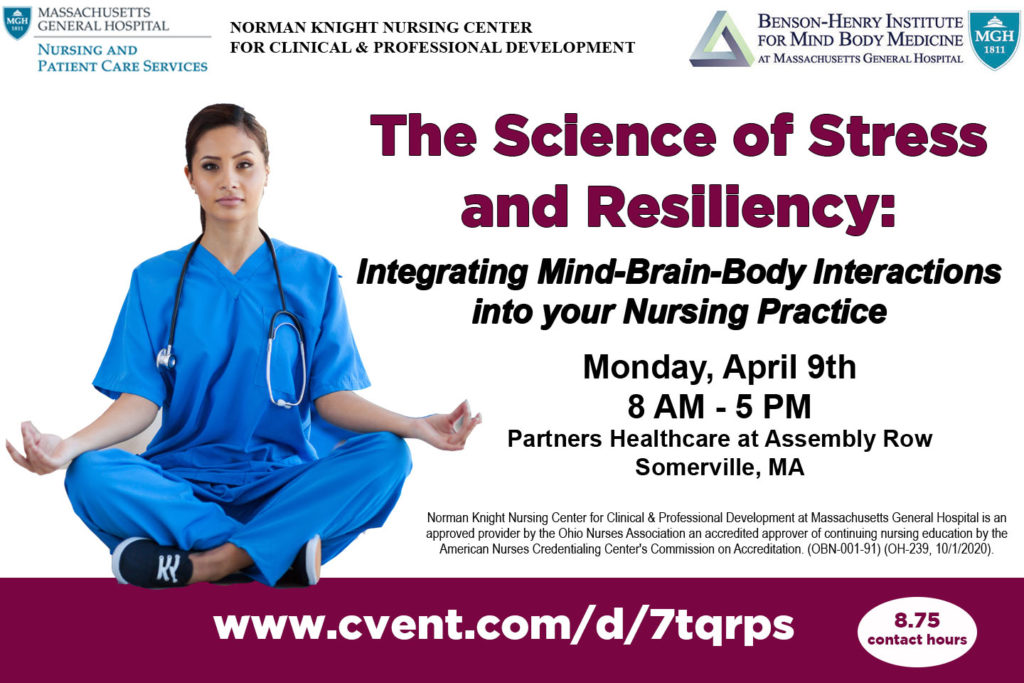
Speakers include BHIS’s Clinical Director of Training, Peg Baim, MS, NP; BHI’s Director of Research, John W. Denninger, MD, PhD; Laura Malloy, LICSW, RYT, Director of Yoga Programs at BHI; and Boston-area nursing leaders Patricia Martin Arcari, PhD, RN, AHN-BC, Program Manager of the Zakim Center for Integrative Therapies at Dana-Farber Cancer Institute; Joanne Rowley, RN, MS, HNB-BC, Clinical Nurse Specialist and Holistic Nurse at MGH Revere; and Women’s Health specialist Leslee Kagan, MS, FNP-BC.
Participation in the course can be applied toward the BHI’s Stress Management and Resiliency Training (SMART) Certification for Healthcare Practitioners program. For more information or to register, visit www.cvent.com/d/7tqrps or email jmeek@partners.org.
Norman Knight Nursing Center for Clinical & Professional Development at Massachusetts General Hospital is an approved provider by the Ohio Nurses Association an accredited approver of continuing nursing education by the American Nurses Credentialing Center’s Commission on Accreditation. (OBN-001-91) (OH-239, 10/1/2020). The Knight Center has awarded 8.75 contact hours.
Back-to-School Strategies that Promote Positivity and Cultivate Resilience
The first sight of a yellow school bus can cause excitement and anxiety. The best way to prepare students for back-to-school is to do just that – prepare them.
“Children thrive with routine; it’s important that as we get back to school, we get back into those routines that kids can rely on – going to bed on time, eating healthy, limiting screen time,” said Marilyn Wilcher, Director of the Resilient Youth (RY) program at the Benson-Henry Institute for Mind Body Medicine (BHI) at Massachusetts General Hospital.
Rana Chudnofsky, MEd, is a former Massachusetts school teacher who works with students, educators and families through the Resilient Youth and Resilient Schools programs. Back-to-school worries can vary according to children’s age and interests, but the one constant should always been open lines of communication, she says.
“A new year can mean a lot of new experiences and anxiety, so communication is key: talk to your child about their expectations, answer their questions and reach out to the school. Whatever the age, kids need to know that their parents are there for them, that they will support them, and that they love them,” Chudnofsky said. “We want to instill and foster resiliency in children, and we can do that by maintaining open lines of communication.”
Back-to-School Tips
- Establish a routine: set standard times for going to bed and waking up, for meals, schoolwork and free time. The sooner you put the routine into practice, the better; that way, waking up early on the first day of school is not a shock to your child’s system.
- Minimize anxiety: everyone gets butterflies before the big day, but if kids feel their parents are anxious for them, they will feel justified for their worries. Talk to your children about their concerns and let them know these are normal feelings; share your own first day worries. Help your child relax by going to the school beforehand, so s/he gets the lay of the land; this alleviates worries about being able to navigate around school. Meet up with friends from school before school starts, plan back-to-school outfits and lunches, and buy your school supplies early so that your child is excited for new opportunities and has a comfort level of what to expect.
- Build excitement: help your child get pumped up for school by talking about great experiences from last year and listing new opportunities the new year will afford. Promote positivity by helping plan what types of clubs, teams or activities your child will join. Going to school should be looked at as an exciting time by the whole family.
- Set healthy limits: going back to school means shedding some of the freedom of summer. Begin the school year with established expectations about the amount of time children will devote to schoolwork, extra-curricular activities, social interactions and family time. Limiting screen time (TV, phones, video games and computers) now will serve you well through the rest of the year. The American Academy of Pediatrics recommends that parents limit children’s daily screen time to no more than one or two hours per day, as well as turning off screens during dinner and prohibiting screens from children’s bedrooms.
Yoga for Every Body
Believe it or not, yoga is not just for 20-somethings in tights, carrying specialty coffees in one hand and yoga mats in the other. You can do yoga at any age—really! The benefits are just as significant as we age.
Yoga is particularly helpful for seniors dealing with joint stiffness, low back pain, balance problems and depression. Regular yoga practice can help us to sync communication between the right and left hemispheres of the brain, improve our agility and sharpen our memory.
It’s important to find the appropriate class for your health and level of conditioning. We encourage you to consult with your healthcare provider before joining a yoga class or trying the poses below.
The following provides a brief overview of yoga benefits for seniors and a glimpse at poses that support those benefits. The poses you see here can be made even gentler, or can be more advanced as your practice evolves.
Reduce Stress and Anxiety, and Improve Sleep
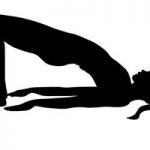
A number of studies have shown that yoga can help reduce stress and anxiety. By doing repetitive postures and focusing on breathing you can create a positive and contented state of mind while shifting the body into a state of relaxation.
—Try the bridge pose to strengthen your lower back and relax.
Increase Bone Density and Strengthen Bones
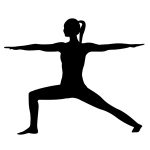
After age 40, we start to lose bone density each year, and eventually can lose about a half-pound of muscle per year for each year we’re not regularly engaged in resistance training. Yoga postures can significantly slow this trend, while improving posture and spinal health, and reducing back pain.
—Try the warrior II pose to strengthen the quadriceps and improve flexibility in the hip.
Increase Flexibility
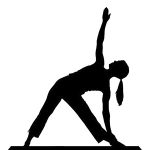
It is not a requirement that we stiffen and tighten as we age. Yoga offers a gentle approach to improving flexibility by lengthening the spine, which helps improve nerve conduction to all of our organs.
—Try the triangle pose if you have arch problems or flat feet, and to improve hip flexibility and balance.
Original Source: MGH Development Office
Lebanese Field Workers Trained in BHI’s Stress Reduction Program
An interview with Dr. Zeina Chemali.
Dr. Chemali, of Massachusetts General Hospital, has taught the Benson-Henry Institute’s Stress Management and Resiliency Training program to health care workers who are caring for Syrian refugees all over Lebanon. Doing so provides the workers and the refugees resiliency skills to cope with this relentless humanitarian crisis.
Historic Conversation Between Pioneers of Mind-Body/Integrative Medicine
Mind-Body Medicine Pioneers to Talk at CME Conference in November
Herbert Benson, MD, and Jon Kabat-Zinn, PhD are two of the most influential pioneers in the field of mind-body/integrative medicine. This fall, these two icons will come together for the first time in a historic discussion.
Drs. Kabat-Zinn and Benson will join forces at the Benson-Henry Institute’s Mind Body Medicine Conference, held at Harvard Medical School, on November 5th, to provide rare insight into how the field of mind-body medicine has evolved, and how it is likely to influence health care in the future.
Their knowledge stems from more than half a century of experience in building the field, from what was once universally viewed by the medical establishment as a marginal approach to care, to what is today increasingly recognized an essential aspect of patient treatment protocol.
Both men have established groundbreaking and highly successful programs in Massachusetts, and so it is no coincidence that Massachusetts, and particularly Boston, is one of the most active areas in the country for research and clinical practice of mind-body medicine.
In research and practice, Benson and Zinn share a commitment to using meditative techniques and an evidence-based approach to practice.
Dr. Benson began his research career into mind-body medicine in the late 1960’s, and dubbed the physiological response to meditative techniques the “relaxation response.” Early homes for the institute included the Deaconess Hospital and the Beth Israel Deaconess Medical Center. In 2006, the institute was integrated as a thematic center into Massachusetts General Hospital. BHI clinical programs consist of three core components: learning and practicing many techniques to evoke the relaxation response, learning to counter negative stress response with adaptive thinking and building resiliency through adaptive lifestyle behaviors. Benson is the author or co-author of over 190 research papers, and best-selling books including The Relaxation Response, The Wellness Book and The Breakout Principle, among others.
Kabat-Zinn founded the Stress Reduction Clinic at the University of Massachusetts Medical School in 1979. There, he created the Mindfulness-Based Stress Reduction (MBSR) course, which combines meditation and yoga in an approach that has come to be known as mindfulness training. He subsequently also founded the Center for Mindfulness in Medicine, Health Care, and Society at the University of Massachusetts Medical School. He is the author of numerous scientific papers on the clinical applications of mindfulness in medicine and health care and several best-selling books, including Full Catastrophe Living, Everyday Blessings and Wherever You Go, There You Are.
The conference is intended for mind-body medicine providers, including physicians, psychologists, psychiatrists, nurses, social worksers, counselors, educators and other health professionals. Early-bird rate currently applies! For more information and to register, click here.
BHI’s Resilient Warrior Program Helps Veterans Feel at Home Again
Home Base helps veterans manage stress and recognize signs of brain injury
BY JENNIFER NEJMAN BOHONAK
- Up to 23 percent had mild traumatic brain injury, commonly known as concussion
- Up to 20 percent had post-traumatic stress disorder
- Up to 37 percent suffered from depression
- Up to 39 percent had problematic alcohol use
- 44 percent of veterans returning home from Iraq and Afghanistan reported they had difficulty returning to civilian life
Source: 2013 Institute of Medicine Report
On most nights, Iraq veteran Molly Alesch uses a journal to relieve stress. She finds a quiet spot and writes down what she is grateful for: A loving family. Flowers in bloom. A good job and access to health care. The practice helps her feel better and sleep better.
Molly, 32, learned how to keep a gratitude journal in a class that teaches veterans to manage stress through meditation, yoga and exercise, as well as how to recognize the signs of brain injury. The class is part of the Resilient Warrior Program, one of the many services of the Red Sox Foundation and Massachusetts General Hospital Home Base Program.
As one of five children growing up in a small town in Iowa, Molly knew the military could help her further her education. She was proud of her older sister who served in the Army National Guard. When the planes struck the twin towers, Molly was a college freshman. The next fall, she joined the Army National Guard. From 2005 to 2006, she served as a logistics officer for an aviation unit in Iraq.
Molly says her tour was easy compared to what some soldiers face. She stayed on the base, which offered some protection. But she was always on-alert. Soldiers were not even allowed to wear headphones when they ran for exercise. They needed to listen for attacks.
When she returned home, Molly carried her war experiences with her. “I think for awhile I had a little bit of survivor guilt,” she says. “You don’t ever get over your tour.”
Helping Post-9/11 Veterans and Families
Home Base is the largest private-sector program in the country devoted to healing the invisible wounds of war—post-traumatic stress, traumatic brain injury, anxiety, depression, military sexual trauma and family relationship challenges. Since its inception in 2009, Home Base has served more than 7,500 post-9/11 veterans and family members and trained more than 10,000 clinicians nationally. Home Base offers wellness programs like the six-session Resilient Warrior program to help veterans feel in control of their lives and manage their stress.
Stress Management Techniques for Veterans
Deployed soldiers develop a sleeping-with-one-eye-open state of mind, says Mass General psychologist Louisa Sylvia, PhD, who along with her colleagues designed the Resilient Warrior course. At home, this response can be problematic. “When a car backfires, you don’t want to reach for your gun,” Dr. Sylvia says. “Or when your son says ‘no,’ you don’t want to feel a swell of anger and aggression.”
Dr. Sylvia teaches veterans to encourage the body’s natural relaxation response. They discuss replacing negative thoughts with positive ones and getting more consecutive hours of sleep to reduce stress.
The Resilient Warrior course was created in collaboration with Mass General’s Benson-Henry Institute for Mind Body Medicine, which creates research-based programs to treat and prevent stress-related illnesses. “For many people, returning veterans included, it takes a little bit of practice and instruction to learn how to manage anxieties and maintain a healthy state of mind and body,” says Gregory Fricchione, MD, Benson-Henry’s director. “We share what medicine has learned with returning warriors.”
Lucky and Healthy
Molly Alesch knows what it means to return home and feel alone. When she came to Boston, a new city for her, to attend grad school, she couldn’t connect with fellow students, who stewed about problems that seemed trivial to her. After earning her degree in school psychology, she re-entered active duty with the Guard and enjoys the camaraderie of working on a team again.
Today, Molly considers herself lucky and healthy. She married in May 2015. In the days before the wedding, she used some of the stress management techniques from the Resilient Warrior Program. The time away with family and friends reaffirmed what was important to her, Molly says. She even took her journal and penned one long entry.
“I’m learning to take deep breaths and be in the moment,” she says.
To support veterans and families in the Home Base Program, contact us.
Using Mind Body Techniques in Your Clinical Practice
Next RR Techniques Online Course Starts November 2016!
“Using Mind Body Techniques in Your Health Care Practice” is a four-week course that provides participants both a broad and deep look at the many methods to elicit the relaxation response. Participants learn how to build their own meditation practice along with effective approaches for instructing their clients to do the same. The interactive learning environment provides CME/CE credits, and is appropriate for both beginners and those with some experience in eliciting the relaxation response.
This course is the second in BHI’s three-part online CME course catalogue.
All techniques taught in this course involve the two essential elements required to elicit the relaxation response: 1) a sustained mental focus, often achieved by repeating a word, sound, prayer or phrase, and 2) an attitude of open receptive awareness achieved by gentle disregard of thoughts.
These mind body approaches presented here have been proven to significantly improve health and quality of life for patients with illnesses that are caused or made worse by stress, including obesity, type 2 diabetes mellitus, hypertension, pain and fatigue syndromes, mood disorders and many others.
Specific methods taught include “mini” meditations, imagery, mindfulness, yoga, tai chi, contemplation and empathy. A multitude of scripts and sample meditations are provided throughout the course for you to practice and use with clients.
• Interactive discussion boards allow for a rich, interdisciplinary exchange of ideas and feedback between professionals from across the United States and around the globe.
• Weekly call-in times allow you to ask questions and have direct dialogue with course faculty.
• Course assignments include online lectures, recommended readings, interactive discussion forums, and weekly conference calls with faculty and all participants.
This flexible course schedule lets you complete assignments whenever your practice schedule allows, and the course content is fully accessible via smartphones and tablets.
Next online course begins: May 1, 2017.
The NEW “3 R’s”: Reading, Writing, and Relaxing
by Matt Robinson, AFT MA Advocate,
With high-stakes testing, financial issues, and other personal and academic problems weighing down on them, students and teachers alike can use all the support they can get. Fortunately, more and more students and teachers are finding ways to support each other while also supporting themselves. BHI is at the head of such programming with its stress-reduction programs for schools.
In addition to its six-week Resilient Kids program for students ages 12-18, the Institute also works with schools and teachers to bring meditation, breathing and other relaxing, focusing techniques to the people who may need them the most but know about them the least.
“With all the competing academic and personal events in their lives, when do any kids have a moment to stop and breathe and relax?,” asks Christy Egun, Director of Boston Partnerships for the MGH Center for Community Health Improvement. “That’s what the…Institute does for our students. The relaxation tools allow them to take time out wherever they are. This is a gift that can last a lifetime!”
One of the lead partners in and largest supporters of the BPS-MGH partnership is East Boston High School teacher Jayne Lacey. Among her many anecdotes about positive experiences with the Institute and what she and her students have gained from their collaboration is one of a day when students were waiting to take an online test whole the computers on which they were to take it rebooted.
“My students began chatting with one another while we waited for the system to come back up.,” Lacey recalls. When one student asked if they could turn off the lights and “have quiet time,” Lacey happily agreed.
“The class immediately quieted down,” she recalls, noting that other students then volunteered to lead the class in meditation.
“They proceeded to take turns leading a breathing focus exercise,” she explains, recalling one of the many skills they hard learned from the Center’s programming. “The ‘quiet time’ lasted for no more than 5 or 6 minutes, but as usual, when finished there was a sense of calm and focus in the room.”
In addition to meditation, Lacey recalls learning and developing interest in such relaxation-supporting processes as guided imagery, and mindfulness exercises from her colleagues at the Center. While she admits to having once used them only sporadically, Lacey says they are now a regular part of her class day.
“We now take 3-5 minutes for ‘quiet time’ to start the class,” she explains, adding that the class often listens to recorded meditation guides. “At the end of the meditation, a bell rings…[and] I begin talking about the day’s work…. By the time I get up from my desk and turn on the lights, we are focused on the lessons of the day.”
In addition (and thanks) to being more focused, Lacey finds her classes more productive and more effective as well. In addition to simply getting more done, the students also seem to care about and for each other in a more profound and productive way.
“There is a stronger sense of community,” Lacey observes, noting that the students often complain when “quiet time” is not available for whatever reason.
“ I recently surveyed my students about the use of this time,” Lacey recalls. “Over and over, the answers were that the best thing was getting to relax, and the worst thing that the time isn’t longer.”
“They ask us to schedule more sessions,” Egun adds, noting that many students say that the relaxation sessions are one of the best features of their work with MGH. “They quickly grasped the connection between stress and academic performance.”
While the focus of the school partnership is academic stress, Egun notes that most of the students go on to use their new skills in other stressful situations as well. “These techniques help them face every stressful event,” she suggests, “even preparing for holidays and the stress often associated with family gatherings.”
In addition to helping her students, Lacey also says that the Institute program has helped her as a teacher as well.
“This practice has become part of a learning environment strengthened through the use of relaxation,” she says. “As we go forward, I plan to pay careful attention to the ways quiet time enhances my students’ ability to learn. I also plan to continue to listen to feedback from the students about ways it helps them, both in and out of the classroom.”
New Book by BHI Clinician
As described on Amazon: An internist and clinical instructor at Harvard Medical School fuses Eastern practices with cutting edge Western medicine to help you connect body and mind to transform your health today and tomorrow.
Over the course of her decades-long career, Dr. Eva Selhub has discovered a fundamental truth: health, happiness, and strength are often a direct result of the affirmative choices we make, regardless of whatever genetic or environmental setbacks we face. When our bodies get sick, we often feel out of control—a cycle of fear that leaves us feeling vulnerable and helpless, desperate for medication or tests that will make us well. But illness shouldn’t make us afraid. We do have control over our wellbeing, contends Dr. Selhub, and we can make choices that can positively influence any health issue, big or small, acute or chronic. It’s all about perception—how you view yourself, your resources, and your circumstances. Drawing on findings in the emerging field of epigenetics, she reveals how we can bolster the mind-body connection and actually change the way our DNA operates.
In Your Health Destiny, Dr. Selhub teaches you how to pay attention to your body’s signals, to understand what these signals mean, and to make the right choices that will bring amazing results to your health, now and for the future. You will discover ways to prevent disease from happening or getting worse; and even find that you can reverse the disease process all together.
We have more power than we think. Your Health Destiny shows you how to harness it to improve your life. Click here for more information.
Yoga for Every Body
Believe it or not, yoga is not just for 20-somethings in tights, carrying specialty coffees in one hand and yoga mats in the other.
You can do yoga at any age — really! And the benefits are just as significant as we age as they are for younger generations.
Many scientific studies show yoga to produce an abundance of benefits. Yoga is particularly helpful for seniors dealing with joint stiffness, low back pain, balance problems and depression. That said, it’s important to find the appropriate class for your health and level of conditioning. We encourage you to consult with your healthcare provider before joining a yoga class or trying the poses below.
The following provides a brief overview of yoga benefits for seniors and a glimpse at poses that support those benefits. The poses you see here can be made even gentler, or can be more advanced as your practice evolves.
 1. Gain greater balance, body awareness and concentration: The American Academy of Orthopaedic Surgeons estimates 1 out of every 2 women and 1 out of every 4 men over 50 will suffer a fracture related to a fall. Yoga balance poses help us to sync communication between the right and left hemispheres of the brain, improving our agility. Yoga also stimulates the nervous system and the brain, thereby sharpening memory and powers of concentration.
1. Gain greater balance, body awareness and concentration: The American Academy of Orthopaedic Surgeons estimates 1 out of every 2 women and 1 out of every 4 men over 50 will suffer a fracture related to a fall. Yoga balance poses help us to sync communication between the right and left hemispheres of the brain, improving our agility. Yoga also stimulates the nervous system and the brain, thereby sharpening memory and powers of concentration.
Tree Pose: Improves balance and focus
 2. Reduce stress and anxiety, and improve sleep. A number of studies have shown that yoga can help reduce stress and anxiety. By doing repetitive postures and focusing on breathing you can create a positive and contented state of mind while shifting the body into a state of relaxation.
2. Reduce stress and anxiety, and improve sleep. A number of studies have shown that yoga can help reduce stress and anxiety. By doing repetitive postures and focusing on breathing you can create a positive and contented state of mind while shifting the body into a state of relaxation.
Bridge pose: strengthens your lower back while supporting relaxation.
Legs-up-wall pose: Gentle release, while helping recirculate blood back to the heart.
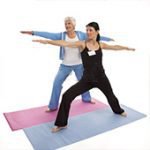 3. Increase bone density and strengthen bones: After age 40, we start to lose bone density each year, and eventually can lose about a half-pound of muscle per year for each year we’re not regularly engaged in resistance training. Yoga postures can significantly slow this trend, while improving posture and spinal health, and reducing back pain.
3. Increase bone density and strengthen bones: After age 40, we start to lose bone density each year, and eventually can lose about a half-pound of muscle per year for each year we’re not regularly engaged in resistance training. Yoga postures can significantly slow this trend, while improving posture and spinal health, and reducing back pain.
Warrior II Pose: Strengthens the quadriceps and improves hip flexibility
 4. Increase Flexibility: It is not a ‘requirement’ that we stiffen and tighten as we age. Yoga offers a gentle approach to improving flexibility by lengthening the spine, which helps improve nerve conduction to all the organs.
4. Increase Flexibility: It is not a ‘requirement’ that we stiffen and tighten as we age. Yoga offers a gentle approach to improving flexibility by lengthening the spine, which helps improve nerve conduction to all the organs.
Triangle Pose: Good for people with arch problems or flat feet, the triangle pose is also good for hip flexibility and balance
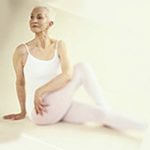 5. Improve many internal processes. Many studies show that yoga improves digestion and blood circulation, lowers blood pressure, regulates blood sugar and cholesterol, and strengthens your immune system.
5. Improve many internal processes. Many studies show that yoga improves digestion and blood circulation, lowers blood pressure, regulates blood sugar and cholesterol, and strengthens your immune system.
Seated Twist: Encourages waste materials to move and stimulates circulation to the digestive organs.
For more information, or to learn more about what yoga classes might be right for you, visit www.bensonhenryinstitute.org or email Director of Yoga Programs, Laura Malloy, LICSW lmalloy@partners.org.



